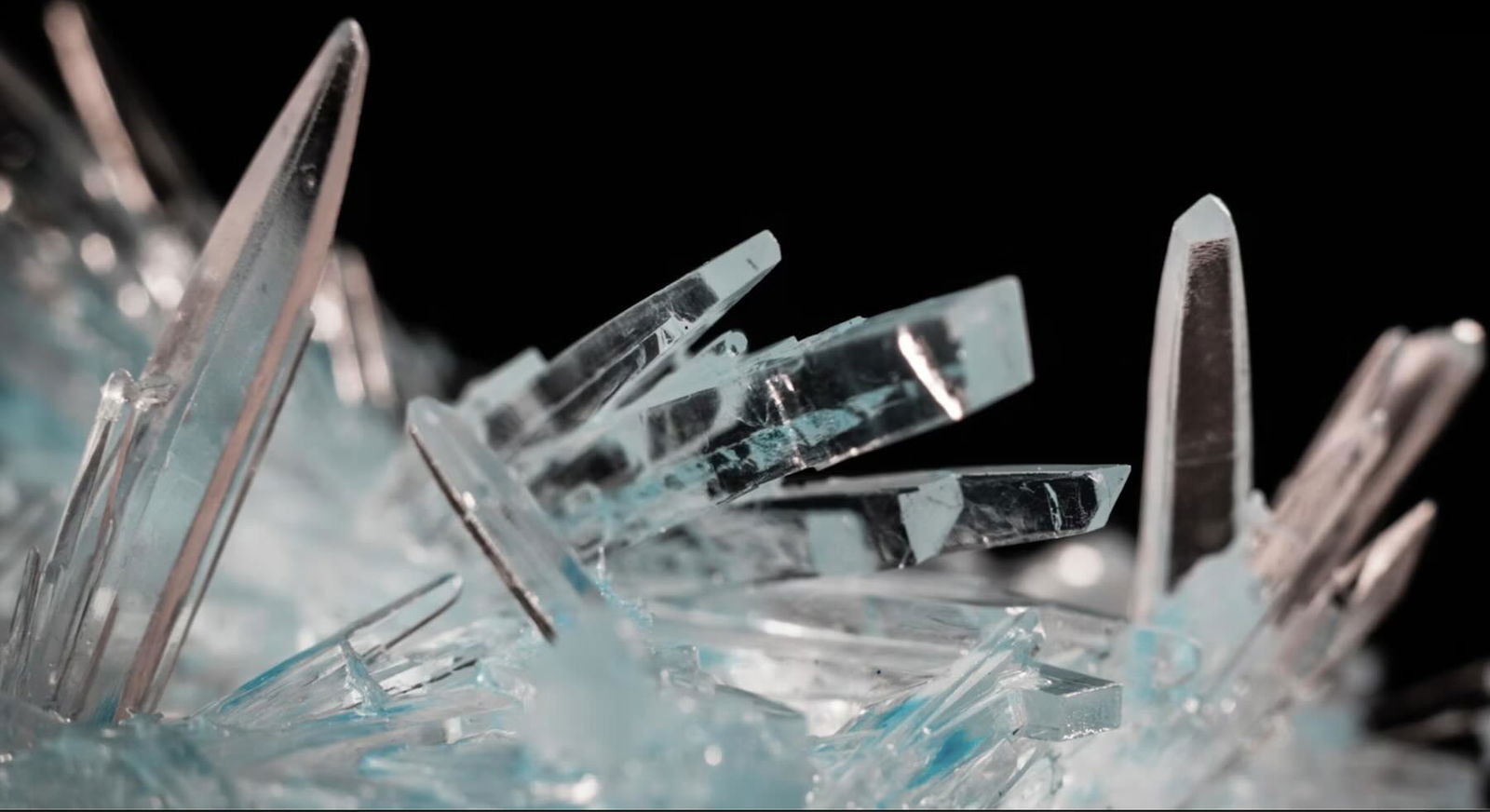Researchers at UC Berkeley report the first observation of a time-rondeau crystal, an unusual phase of matter in which long-term temporal order coexists with short-term disorder.
Revealed in a new paper in Nature Physics, the crystal takes its name from a musical form in which a repeating theme alternates with contrasting elements. As befitting its musical namesake, the crystal operates on a dependable yet chaotic rhythm, with controllable random fluctuations occurring between otherwise predictable behaviors.
“The motivation for this research stems from how order and variation coexist across art and nature,” said co-author Leo Moon, a Ph.D. student at UC Berkeley. “Repetitive periodic patterns naturally arise in early art forms due to their simplicity, while more advanced music and poetry build intricate variations atop a monotonous background.”
Making a Time-Rondeau Crystal
Other crystals may exhibit various forms of duality, such as the randomly arranged hydrogen nuclei within a well-ordered oxygen lattice found in water ice, yet never before has stroboscopic order, or punctuated, predictable behaviors, coexisted with controllable random disorder.
The researchers’ work focused on the carbon-13 spin in diamonds. The diamond’s crystalline structures contain defects where nitrogen atoms sit next to empty lattice sites. By manipulating these vacancies with a laser to become spin-polarized and then transferring the spin with a microwave pulse, the team hyperpolarized the carbon-13 spins. Within just 60 seconds, the technique increased the nuclear spin polarization by 1,000-fold, making it much easier to track.
After the team achieved the desired spin, it was locked with strategically timed microwave pulses, producing structure in the partially random rondeau order. To maintain control of this complex system, they used an arbitrary waveform generator with sufficient memory to store and execute over 720 different pulses in each run.
“The diamond lattice with carbon-13 nuclear spins is an ideal setting for exploring these exotic temporal phases because it naturally combines stability, strong interactions, and easy readout,” explained Moon. “Diamond itself is incredibly stable—it doesn’t react chemically, it’s insensitive to temperature changes, and it shields the spins well from outside noise.”
Collecting the “Smoking Gun”
Halfway between measurements of time crystals and predictable periodic behaviors, the researchers observed random polarization fluctuations that did not align with any predictable pattern, evidencing the long-term order contrasting with the short-term disorder that defines rondeau order. Notably, the team measured the rondeau order persisting for over 4 seconds across more than 170 periods.
Another piece of evidence that the team had indeed produced their desired order was that typical time crystals exhibit a single sharp peak in their frequency spectrum. In contrast, the observed rondeau order showed a continuous, smooth distribution across all frequencies, which the team referred to as a “smoking gun.”
“Rondeau order shows that order and disorder don’t have to be opposites—they can actually coexist in a stable, driven quantum system,” said Moon.
Practical Applications
The researchers demonstrated that their work was not simply a novelty of physics theory but could be put to real-world use, as they successfully were able to use the disordered state to encode information. By engineering the drive pulse sequences, the team stored over 190 characters (the title of their paper) within the micro-motion dynamics of the carbon-13 spins.
Intriguingly, the information is stored in time, they say, rather than in space, as the encoding mechanism involves spin direction at different times.
“There isn’t an immediate, straightforward application yet, but the idea itself is fascinating that disorder in a non-periodic drive can actually store information while preserving long-time order,” Moon said. “It’s a bit like the analogy between water and ice: ice has ordered oxygen positions but disordered hydrogen bonds, and that local randomness carries structural information.”
One possibility is that tuning the disorder could be helpful in quantum sensing technologies seeking to focus on specific frequency ranges. To continue their work, the researchers are interested in exploring other materials besides diamond, such as the enhanced sensitivity of hydrogen-1 spins in pentacle-doped molecular crystals.
With this novel state of matter both documented in observations, and also now shown to be useful in encoding information, the team has set the stage for a promising new pathway toward future quantum applications.
The paper, “Experimental Observation of a Time Rondeau Crystal,” appeared in Nature Physics on October 14, 2025.
Ryan Whalen covers science and technology for The Debrief. He holds an MA in History and a Master of Library and Information Science with a certificate in Data Science. He can be contacted at ryan@thedebrief.org, and follow him on Twitter @mdntwvlf.


